I'm trying to analyze the Sparkfun Logic Level converter found here:
https://www.sparkfun.com/products/12009
A rough schematic is shown below:

simulate this circuit – Schematic created using CircuitLab
Now, I've looked at the application note mentioned on Sparkfun's page, and I understood most of it in regards to how it shifts levels, but I'm having trouble understanding the third part going from the high logic voltage to the lower logic voltage. I searched for some similar questions on the site, but teh answers that I found didn't seem to explain this part well.
My question is how does it shift the logic level from the high logic to the low logic? The app note says that when voltage on the high side, it utilizes the diode between the drain and substrate; at this point, the substrate (body) is at 3.3 V, so when the high input is 0 volts, the 'diode' conducts, dropping the voltage at the low port to 0, turning on the diode, further dropping the voltage. When the 'diode' conducts, why does it drop the source pin (connected to the body/substrate) down from 3.3 to 0? I would have thought that it stayed the same voltage at 3.3 V.